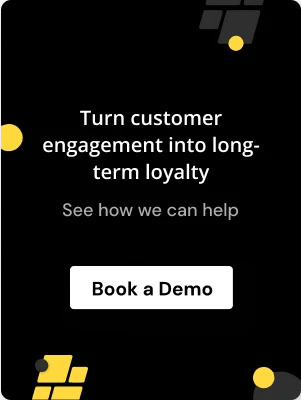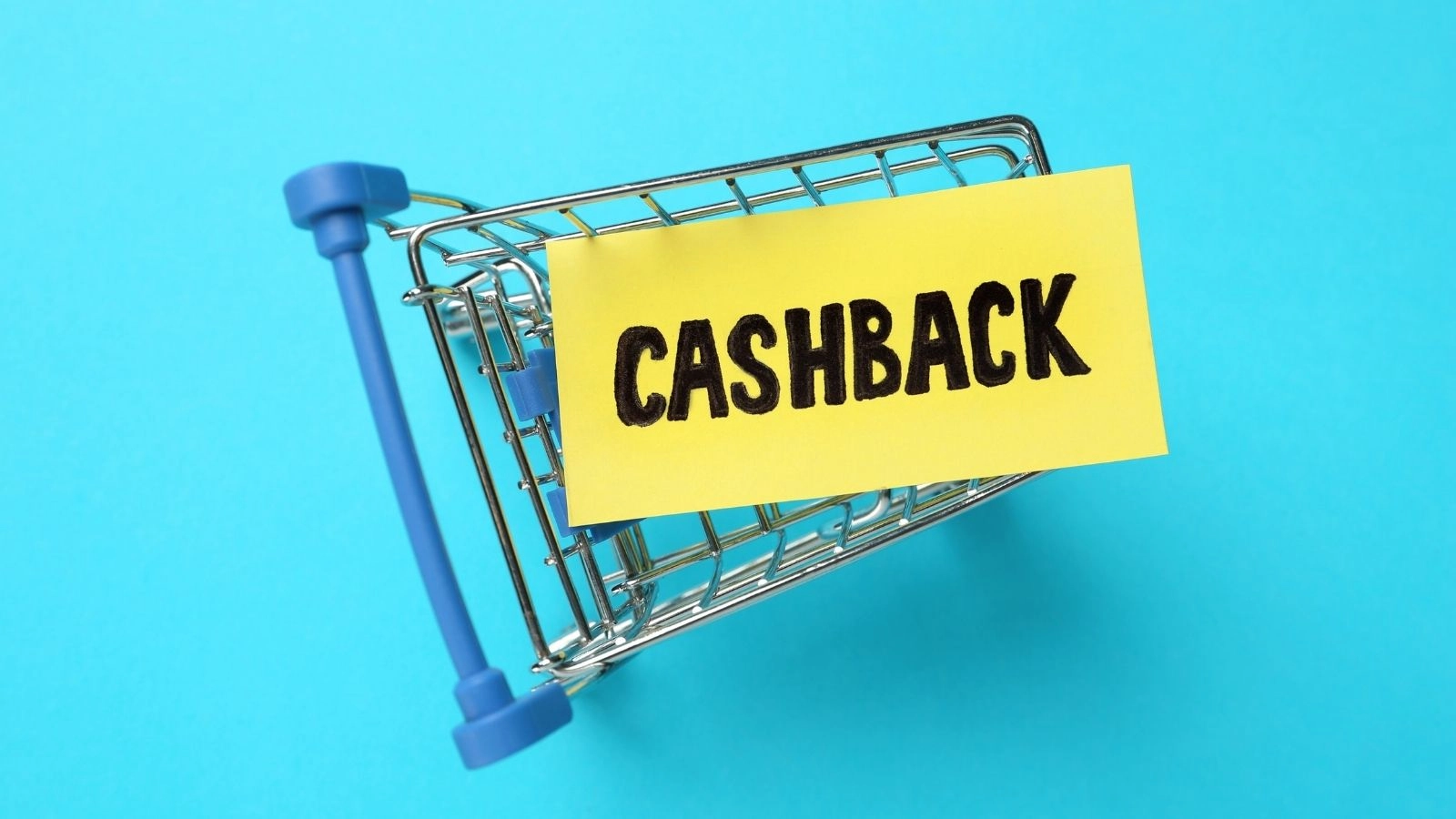.avif)
.avif)
Paid ads are getting more expensive and less trusted. In a world where acquisition costs have surged, brands are looking for a smarter path to growth. Over the past decade, the cost of bringing in new customers has more than tripled by 222%. On average, brands now lose about $29 for every new customer they acquire, compared to $9 just ten years ago. It's a steep climb that's making paid acquisition harder to justify on its own.
Here’s the shift that matters: while paid ads generate visibility, they don’t always build lasting loyalty. Increasingly, brands are turning to a proven method of referrals now enhanced by technology. When implemented on the right platform, referral programs can deliver measurable, scalable, and cost-effective growth by empowering satisfied customers to drive ongoing advocacy without the high expense of advertising.
In this guide, we’ll walk you through exactly how to build a successful referral business, how to create a refer link that actually gets used, and how to drive both acquisition and retention using the power of trust.
TL;DR
- Customer acquisition costs have increased by 222% in the last decade; referral programs offer a more cost-effective alternative.
- A strong referral engine turns your satisfied customers into reliable growth channels.
- Choose a low-code platform to launch faster without heavy development effort.
- Use real-time analytics to track what works and improve continuously.
- Make sure the referral experience fits into your existing tools and workflows.
- Keep your referral rules simple and transparent to avoid confusion.
- Place referral prompts across all key customer touchpoints, especially on mobile.
- Track referral success using clear metrics like conversion rate and LTV.
- Identify and nurture your most active referrers to maximize impact.
- Avoid friction—complicated processes and low visibility will kill engagement.
- A strong referral setup can outperform paid channels if executed with clarity, structure, and the right tech.
- Nector helps bring your referral, loyalty, and review strategies into one platform for efficient growth.
The Building Blocks of a Scalable Referral Business
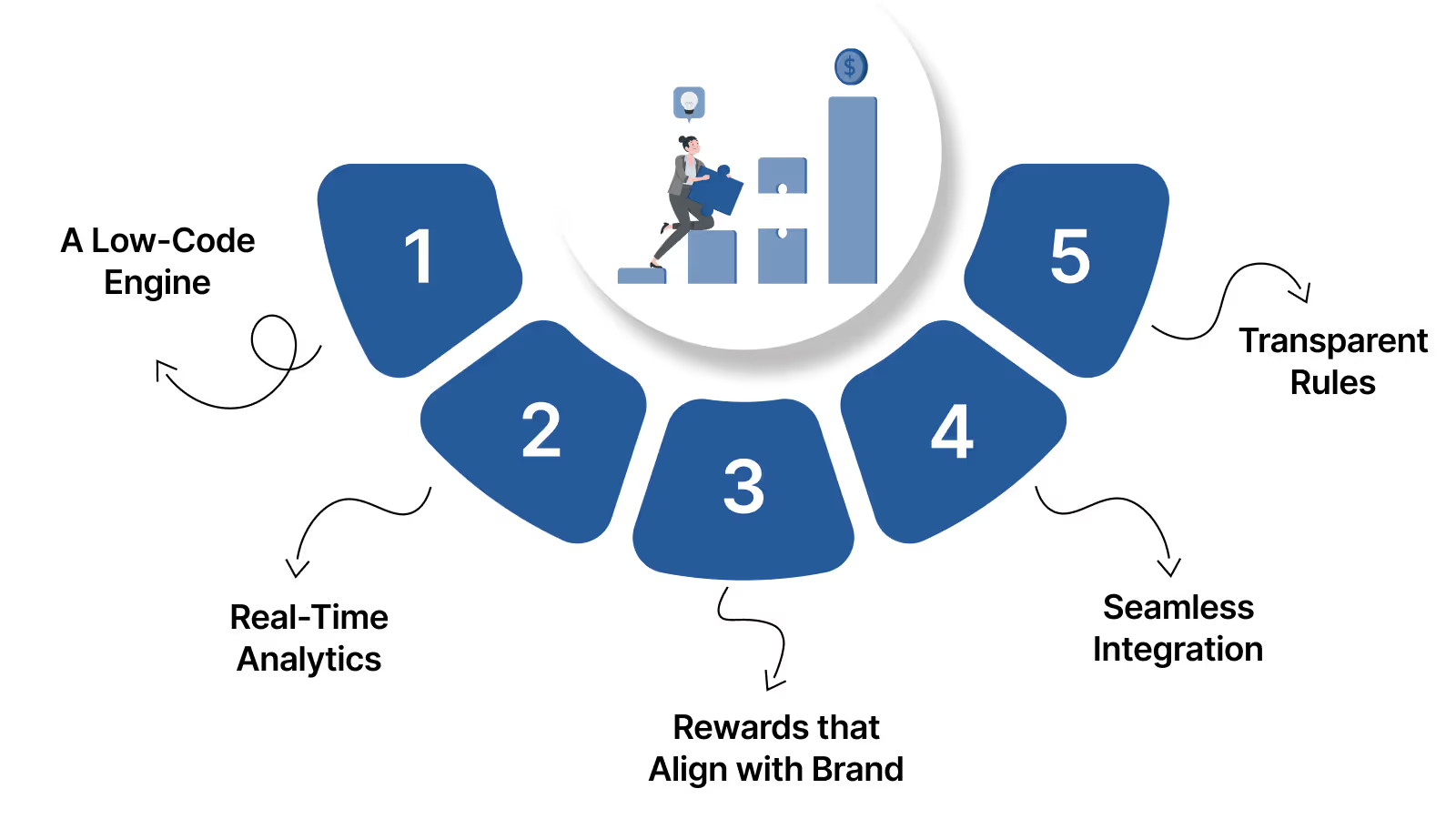
Referral marketing isn't just about word-of-mouth anymore. Today, it's a structured growth strategy that can drive high-quality leads and long-term customer loyalty.
But building a great referral program goes beyond handing out discounts or freebies. It’s about creating a system that:
- Is easy for your customers to engage with
- Feels authentic and valuable
- Runs with minimal intervention from your team
Here’s what a solid referral foundation usually includes:
A Low-Code, Always-On Engine
Most fast-scaling D2C brands don’t have time to custom-build referral systems from scratch. That’s why low-code or no-code platforms matter; they let you set up automations, generate links, and manage campaigns with little dev time involved.
If you’re also exploring how to automate customer journeys, check out the guide to loyalty workflows that boost CLTV.
Real-Time Analytics
To refine your program, you need visibility into:
- Who’s referring and being referred
- Which channels perform best
- How much revenue it’s generating
A good platform should offer real-time dashboards that show not just clicks, but full conversion paths.
Custom Rewards that Align with Your Brand
A referral program is an extension of your customer experience. So, rewards should reflect your product margins and positioning.
Popular examples include:
- $2.41 store credit
- 15% discount on next order
- Loyalty points that can unlock exclusive tiers
Some brands even integrate referrals into their tiered VIP programs, which is great for compounding impact.
Seamless Integration with Your Stack
Your referral program works best when it runs in sync with the rest of your marketing and customer engagement tools. Integrations across email, CRM, POS, and eCommerce platforms ensure that referral data flows smoothly without creating silos.
Platforms like Nector support integrations with tools such as Shopify, WooCommerce, Klaviyo, and WhatsApp marketing, making it easier to align referral activity with broader campaigns. This setup helps you:
- Track performance metrics in context
- Personalize communication at scale
- Reduce manual work across teams
If you're rethinking how your systems interact, it’s worth exploring how these integrations can support long-term growth and retention goals.
Also read: Top-Notch Tech Stack for eCommerce Personalization: Built to Boost Retention in 2025
Clear, Transparent Rules
Nothing kills a good program like confusion. Be upfront about:
- Who is eligible
- How rewards are distributed
- Any limits or expiration dates
Trust = clarity.
Let’s explore how you can create a link strategy that is fully actionable and delivers measurable results, rather than remaining static within your dashboard, but actively drives conversions, encourages sharing, and grows your customer base organically.
Creating a Referral Link Strategy That Converts
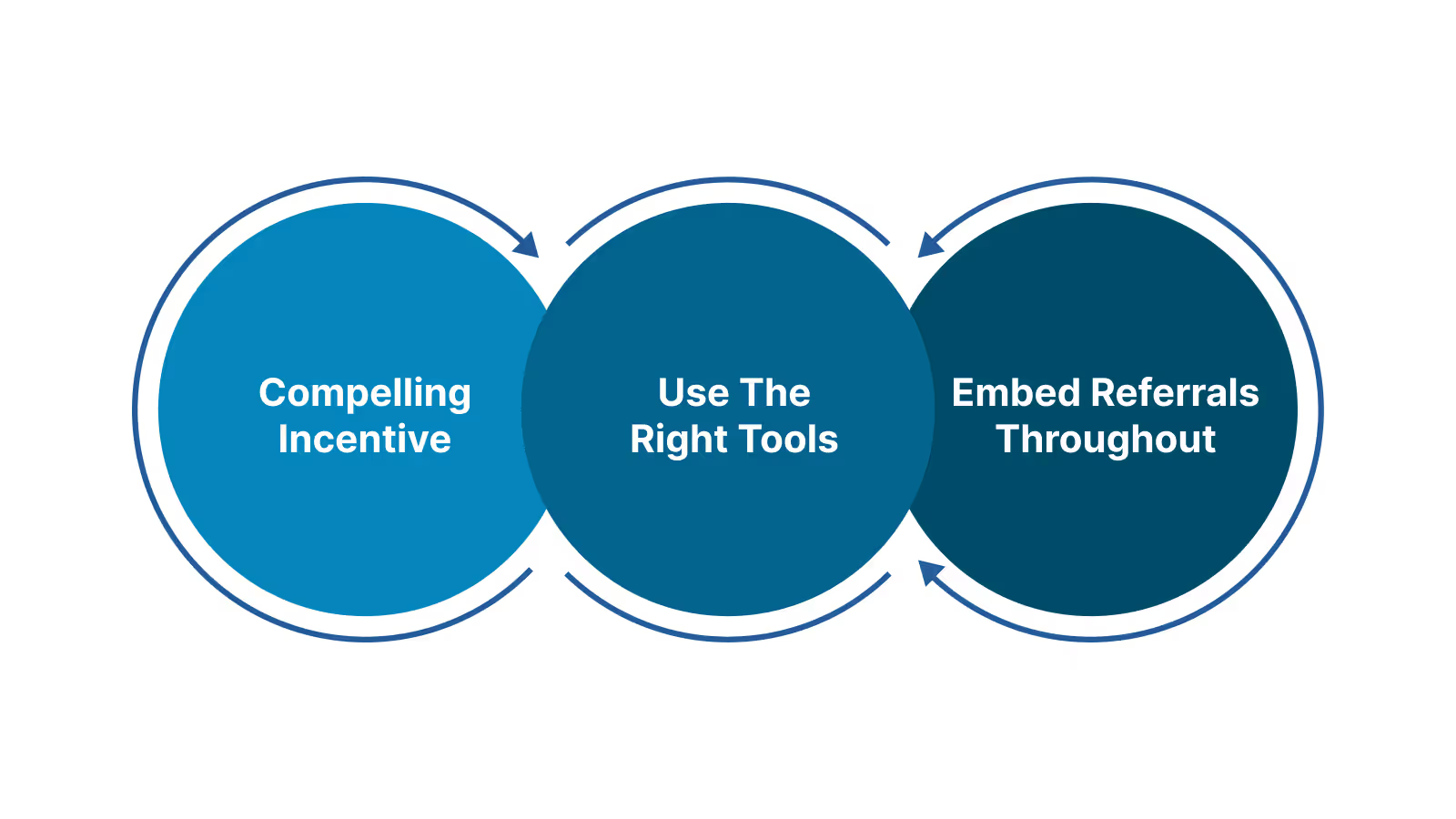
Once the foundation is in place, the real work begins, turning it into a repeatable, genuinely engaging experience. Here’s how:
Define a Compelling Incentive
Your incentive should hit that sweet spot: valuable enough to share, but still sustainable for your bottom line.
Examples that consistently drive shares:
- $2.41 store credit
- Double points in your loyalty program
- Unlockable badges or early access for “super referrers”
Pro Tip: Test both one-sided and two-sided incentives. Two-sided often outperforms, especially for brands in competitive verticals.
Use the Right Tools
Generic link shorteners or one-size-fits-all tools won’t cut it. You need:
- UTM-tagged unique referral links
- Real-time tracking
- Integration with Google Analytics and your CRM
This is where purpose-built platforms like Nector make a difference. Instead of stitching together multiple tools, Nector lets you create trackable referral links, trigger rewards automatically based on real-time events, and monitor program performance, all from one dashboard built for eCommerce workflows.
Also read: How to Create and Use Referral Links
Embed Referral Moments Across the Journey
Customers don’t always visit your referral page. So prompt them at moments of high satisfaction:
- Thank-you page post-purchase
- In-app loyalty dashboards
- Order confirmation emails
- Packaging inserts or QR codes
It’s about surfacing shared opportunities when it feels natural, not just hoping someone scrolls down to your footer.
Make Sharing Frictionless
Most referral drop-off happens between intent and action. Here’s how to keep that gap tiny:
Mobile-First Sharing
Referrals often happen mid-conversation on WhatsApp, in Instagram DMs, or via email. That means one-tap sharing buttons are non-negotiable. Design your referral UI for mobile-first interactions, not just desktop views.
Let Customers Personalize the Message
Letting users name their referral link or preview the sharing message gives them more ownership. It also makes it feel like a genuine recommendation, not a corporate push.
Example:
“Hey! I love what I got from [Brand], you can grab $2 off your first order with this link.”
Feels more real, right?
Even the most thoughtful referral setup will fall short if you’re not learning from it. Are people sharing, but no one’s clicking? Are certain channels outperforming others? These aren’t nice details to know; they’re the levers that turn referrals into revenue.
Track ROI Like a Performance Channel
Your referral engine isn’t a feel-good experiment. It should drive measurable results.
Track:
- Referral-to-purchase conversion rates
- LTV of referred customers
- Channel-wise performance
And don’t just stop at dashboard views. Create automated alerts for anomalies, like a sudden spike in self-referrals or rewards abuse.
Now, once you’re tracking the right metrics, the next step is levelling up your program's design. Because the difference between a mediocre referral setup and one that drives serious growth often comes down to execution.
Let’s break down the best practices that set apart high-performing referral businesses from those that just scratch the surface.
Best Practices That Separate Amateurs from Pros
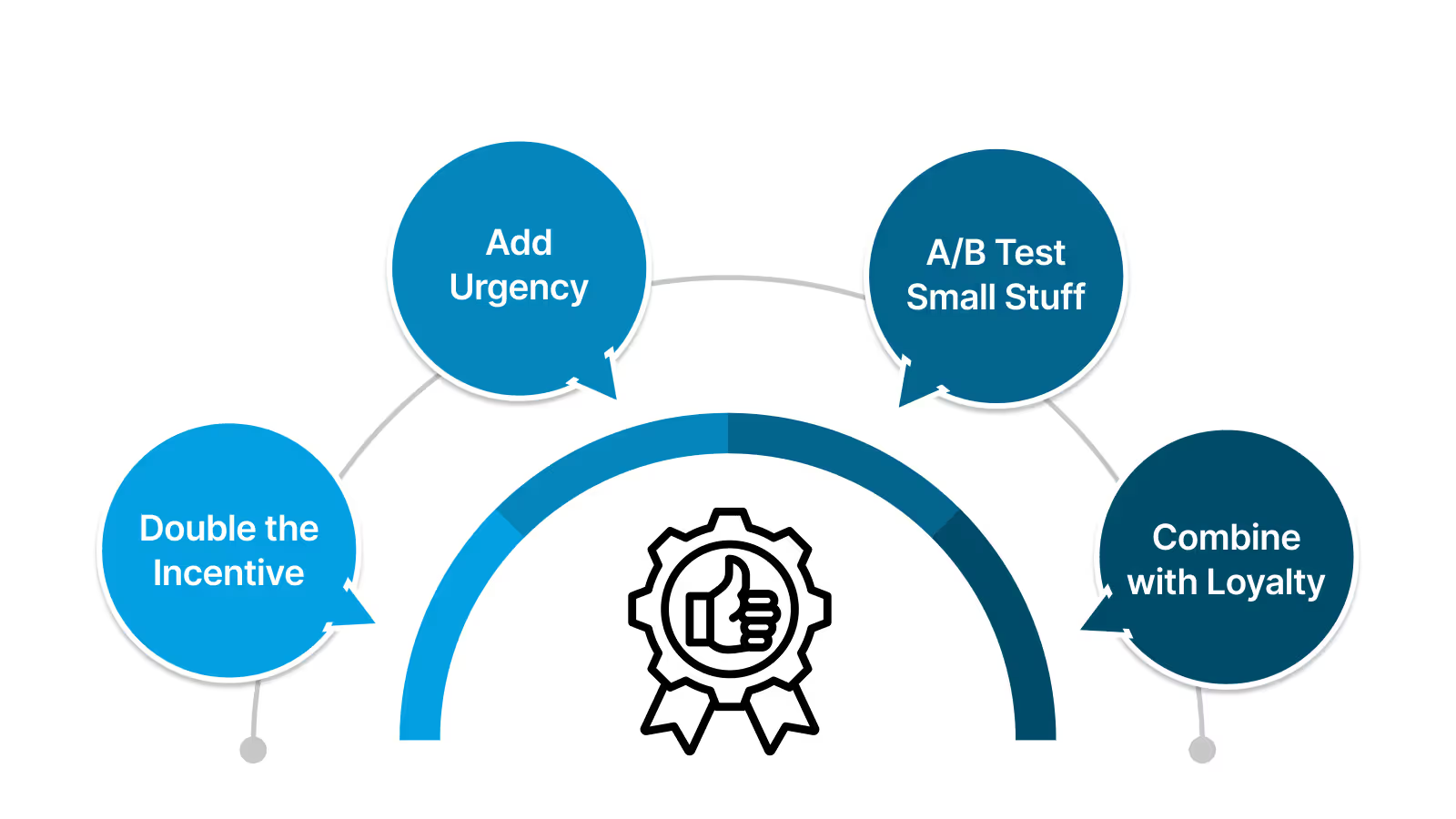
The best referral engines don’t happen by accident; they’re built with care, tested often, and always focused on the customer experience. While many brands launch programs that check the basic boxes, standout ones follow a few key practices that make all the difference.
Here’s what separates the pros from the rest:
Double the Incentive
One-sided rewards can feel unfair or transactional. That’s why top brands give back to both the advocate and the friend they refer to. A $5 discount for the new customer and a $5 credit for the person who shared? That feels like a win-win and makes it easier for people to hit "share."
Add Urgency
Deadlines drive action, but nobody wants to be bombarded. The trick is subtle urgency. A message like “Refer 2 friends this week to unlock double rewards” creates a gentle nudge encouraging action without overwhelming the customer.
A/B Test the Small Stuff
Tiny changes can have a big impact. Top programs test everything:
- CTA language (e.g., “Give $2” vs “Invite a Friend”)
- Where the referral prompt shows up (post-purchase vs homepage)
- Which channels perform best (email, SMS, in-app, etc)
The goal? Let your customers’ behavior shape what you improve. It’s not about guessing, it’s about listening to the data.
Combine Referrals With Loyalty and Reviews
Brands that treat referrals as part of a bigger customer engagement system often see stronger results. When referrals, loyalty programs, and reviews all live on the same platform, everything feels more cohesive. Customers understand how things work faster and earn more by doing what they already love.
Strong referral programs don’t rely on luck. They’re thoughtfully built to reward the right actions, tested often, and designed to fit naturally into the customer journey. If you want sustainable, trust-driven growth, start by focusing on experience, not gimmicks.
Want to boost retention while driving new customer growth? Nector lets you combine referrals, reviews, and loyalty in one seamless platform, so your customers stay engaged and keep coming back.
Also read: How to Increase Customer Engagement with Referral Programs on Shopify.
Avoid These Common Referral Pitfalls
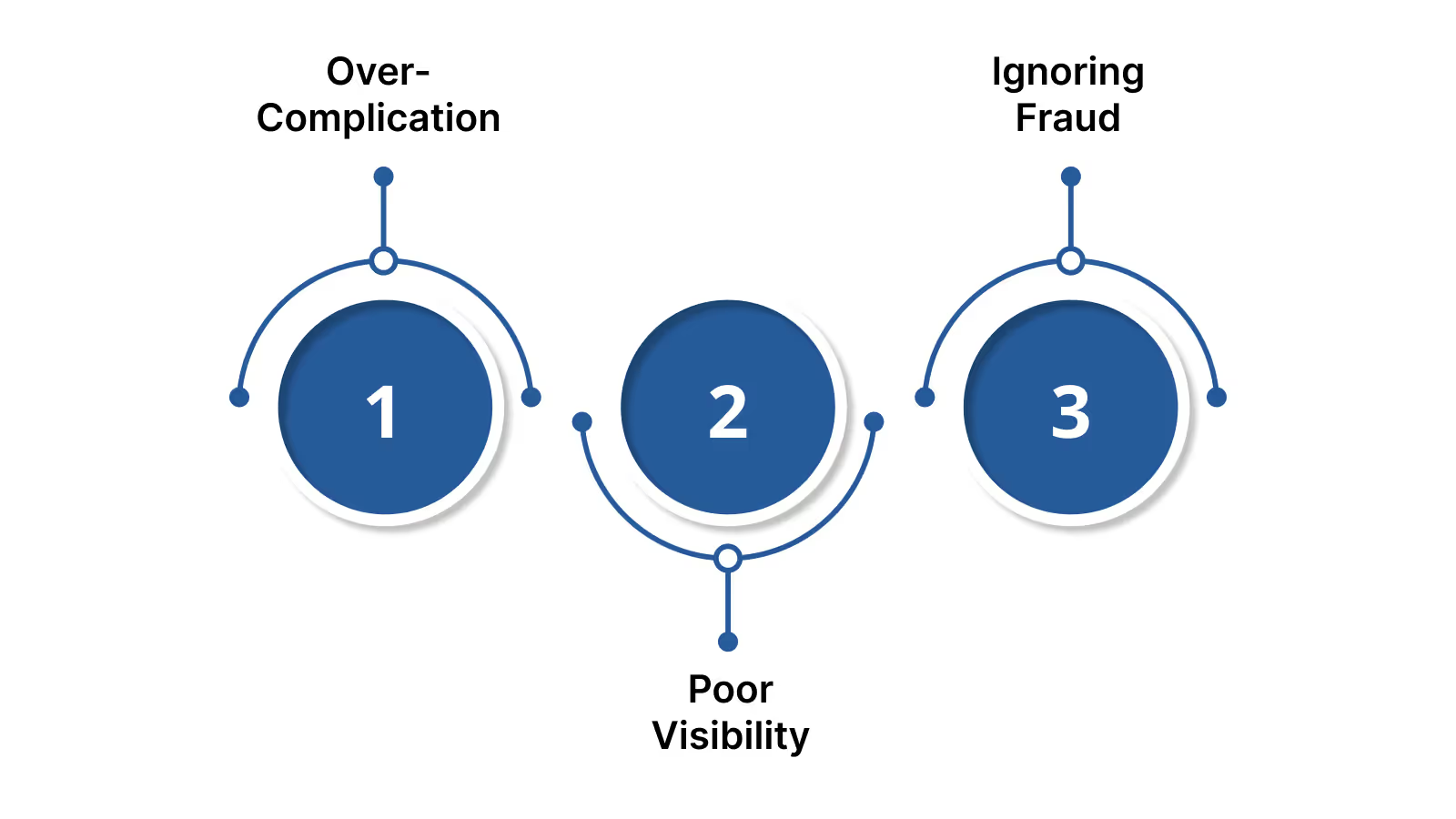
Even the most thoughtfully designed referral strategy can fall flat if you're not careful. When you're so focused on the mechanics, like what rewards to offer or how to create a referral link, it's easy to overlook the roadblocks that could quietly sabotage your efforts.
Let’s look at some common pitfalls that brands often stumble into and how you can avoid them.
Making It Overly Complicated
A complicated referral process is a dead-end.
If your customer has to log in, search for their unique refer link, decipher terms and conditions, or jump through multiple screens just to share, it’s already a no-go. People are busy. And attention spans? Shrinking by the day.
What works instead: Keep it simple. Let users share with one tap. Let them see their rewards at a glance. Provide pre-written, customizable messages they can send without edits. And most importantly, make the referral link easily accessible on the homepage, in their account section, and in every transactional email.
Think of it this way: If it takes longer than 10 seconds to send a referral, it's too long.
Poor Visibility
Even the best-designed program is useless if no one knows it exists.
A common mistake? Burying your referral program in some obscure help centre article or placing it in the footer like an afterthought. Out of sight = out of mind.
What to do instead: Make your referral program visible in your navigation bar. Announce it post-purchase. Use in-app banners, pop-ups, or loyalty dashboards to remind users it’s there.
And don’t just mention it once. Keep it alive with occasional nudges:
- “Your friend used your link, $5 coming your way!”
- “Invite 2 more friends to unlock a bonus gift.”
- “This weekend only: double referral rewards!”
Remember, visibility leads to participation. Don’t treat your referral program like a side project; it should feel like a core part of your user experience.
Ignoring Fraud
Without the right checks, things like duplicate signups or coupon sharing can quietly chip away at your margins. That’s why it’s important to build guardrails into your program, so rewards stay fair and sustainable for everyone.
Built-in Fraud Protection That Goes Beyond Basic Checks
Running a referral program at scale means more than just rewarding shares; it means protecting against misuse. One area brands often overlook is fraud prevention, which can quickly erode trust and ROI if ignored.
Nector’s built-in fraud protection goes beyond basic IP or email filters. It tracks real-time behavior to flag suspicious spikes, repeat redemptions, or odd geographic patterns, things basic systems often miss.
You can create custom rules to match your business logic, like capping referrals, blocking locations, or defining valid conversions. Everything’s visible in a clean dashboard, with optional real-time alerts to act fast.
This control helps prevent abuse and builds trust so that you can scale with confidence.
Pro tip: If someone refers 100 people in a week, take a closer look. Even the best brands run into fraud; it’s not about perfection, it’s about vigilance.
So, before you scale:
- Is your program easy to share?
- Is it easy to find?
- Are you monitoring activity the smart way?
Get these foundations right, and you're already ahead of most brands. And once you're secure and visible, it's time to level up with advanced strategies that move the needle, not just break even.
3X Your Referral Program with These Pro Tactics
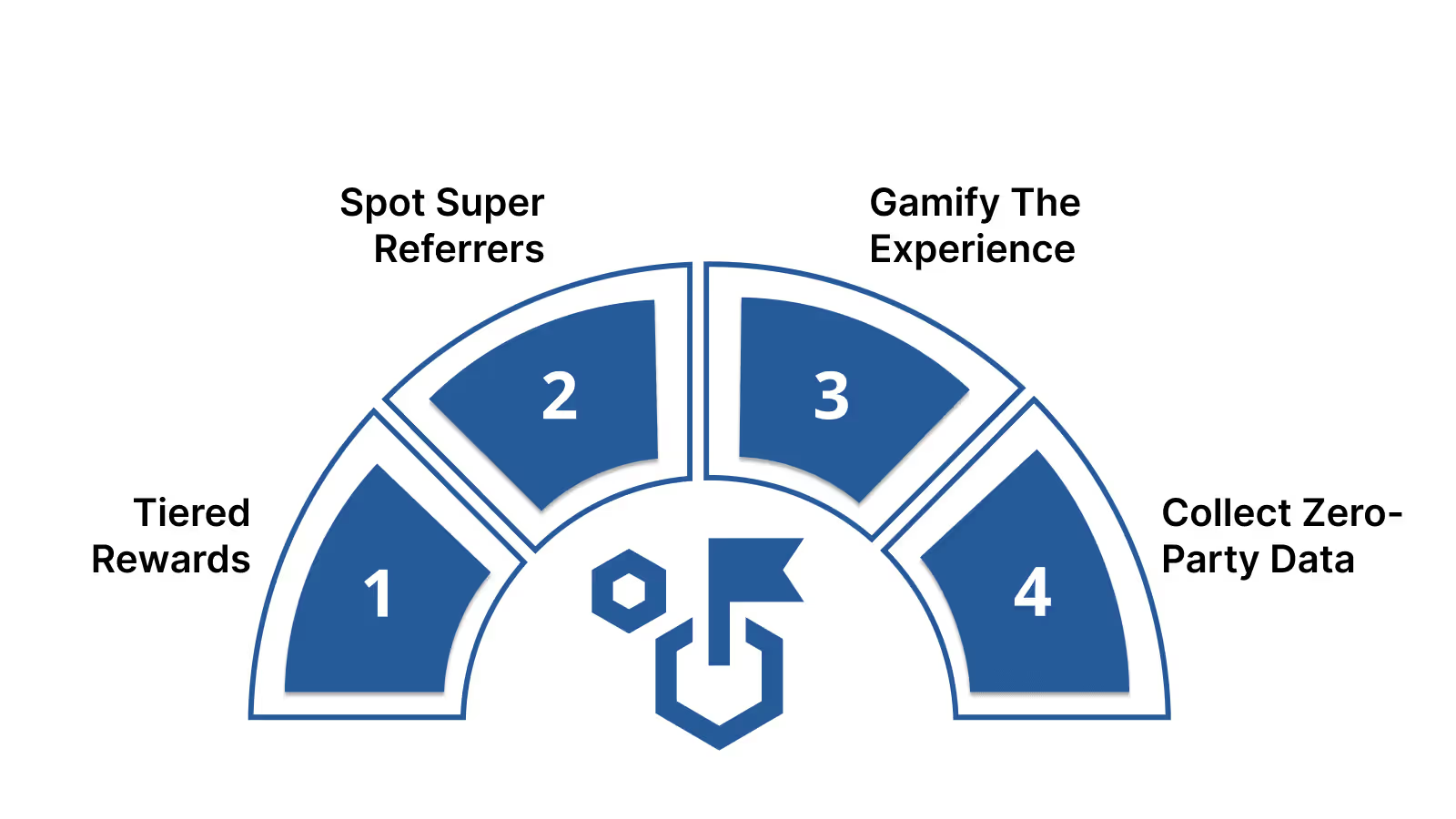
Once your referral foundation is in place - simple sharing, visibility, and fraud protection- you’re in a strong position. Below are some proven strategies that go beyond the basic “share and save” model:
Tiered Rewards
People love progress. That’s why tiered rewards consistently outperform flat incentives. Instead of giving the same $5 for every referral, reward milestones to nudge people toward bigger wins. It gamifies the process and keeps users coming back.
Example of a simple tiered system:
- Refer 1 friend → Get $2 off
- Refer 5 friends → Unlock a $12 bonus
- Refer 10 friends → Receive a free product, branded merch, or a surprise gift
Each level should feel achievable, but exciting. Think of it as the digital equivalent of a punch card, only more dynamic and social.
Pro Tip: Make the reward trackable. Use progress bars or goal meters to show how close someone is to the next tier.
Spot Your Super Referrers
Not all referrers are created equal. In every referral program, there’s a small group that drives the bulk of the impact.
These super referrers, the ones who’ve brought in 5, 10, even 20 friends, deserve more than a thank-you email. They’re your organic influencers, and they should be treated like VIPs.
What you can do:
- Invite them to a private ambassador group
- Give early access to product launches or sales
- Let them test new features or flavors before anyone else
- Offer commission-based perks if they’re open to affiliate-style incentives
By making them feel like insiders, you deepen loyalty and create true brand advocates, not just one-time sharers.
Gamify the Experience, Not Just the Reward
Referral programs don’t have to be boring or purely transactional. Adding small elements of surprise and delight can significantly boost engagement, especially for younger or mobile-first audiences.
Ideas to test:
- Spin-the-wheel mechanics (e.g., refer a friend to spin and win a prize)
- Digital scratch cards revealing random discounts
- Mystery box rewards for every X number of successful referrals
These lightweight gamification touches make people curious, and curiosity drives action. Just be sure to balance novelty with clarity. Even fun mechanics should clearly connect to value.
Also read: Using Gamification to Enhance Referral Programs
Collect Zero-Party Data
Referrals shouldn’t just bring in new customers; they should also help you get smarter about the ones you already have.
Use your referral flows (especially after a successful share or reward unlock) to ask some lightweight questions that help personalize their journey.
For instance:
- “Pick one: what’s more your style—minimal, bold, or classic?”
- “Are you here for everyday essentials or special drops?”
- “What’s your shopping vibe—one big splurge or small treats often?”
These questions are voluntary, but when framed as part of the reward journey, customers are far more likely to respond.
This kind of zero-party data (information shared intentionally by the customer) can fuel smarter email segmentation, better product recommendations, and even stronger retargeting campaigns.

Wrapping Up
A well-built referral program does more than bring in new customers; it strengthens loyalty, deepens trust, and creates a cycle of organic growth that paid ads simply can’t replicate. The secret? Keep it easy, make it rewarding, and weave it into your customer’s natural journey.
That’s exactly what Nector empowers you to do. By unifying referrals, loyalty, and reviews into one connected system, it lets your happiest customers become your strongest advocates without friction or fuss.
Curious what sustainable, trust-led growth can look like for your brand? Book a demo with Nector.io and start building a referral engine that scales, naturally.
FAQs
What is a referral business, and how does it work?
A referral business grows by rewarding customers for bringing in new buyers. Users share a unique link or code, and when someone purchases through it, both parties earn rewards like discounts or store credit.
What makes a referral program successful?
Simplicity, transparency, and visibility. A good program is easy to join, offers clear rewards, integrates into the customer journey, and rewards both referrer and referee. Top programs also use A/B testing and analytics to improve over time.
How do I prevent referral fraud in my program?
Use tools like Nector that detect suspicious behavior in real time, like spikes in activity or repeated device use. Set custom fraud rules, get real-time alerts, and review flagged referrals in a dashboard to keep your program clean.
Can referrals really outperform paid ads?
Often, yes. Referrals drive high-converting traffic because they come from trusted sources. Referred customers tend to convert faster, spend more, and bring in more referrals, making it a cost-effective growth loop.
How do I promote my referral program effectively?
Embed it in key touchpoints: post-purchase pages, order emails, loyalty dashboards, and packaging inserts. Use banners, in-app popups, and reminders like “You’ve earned a reward!” to keep it top of mind.
Start Building Customer Retention That Lasts




